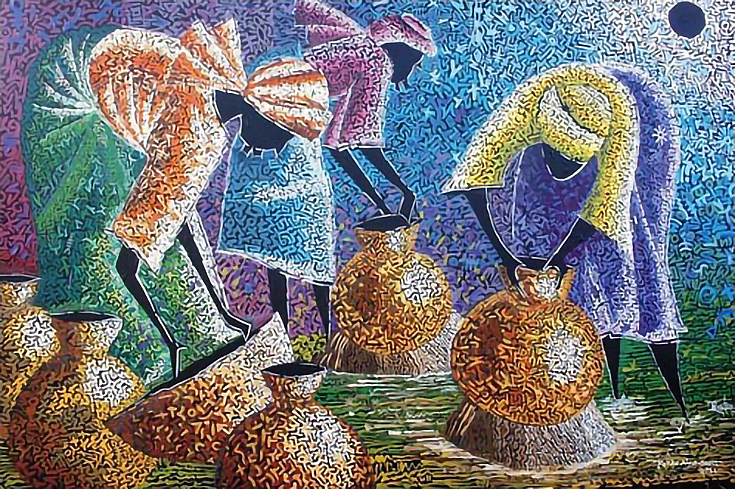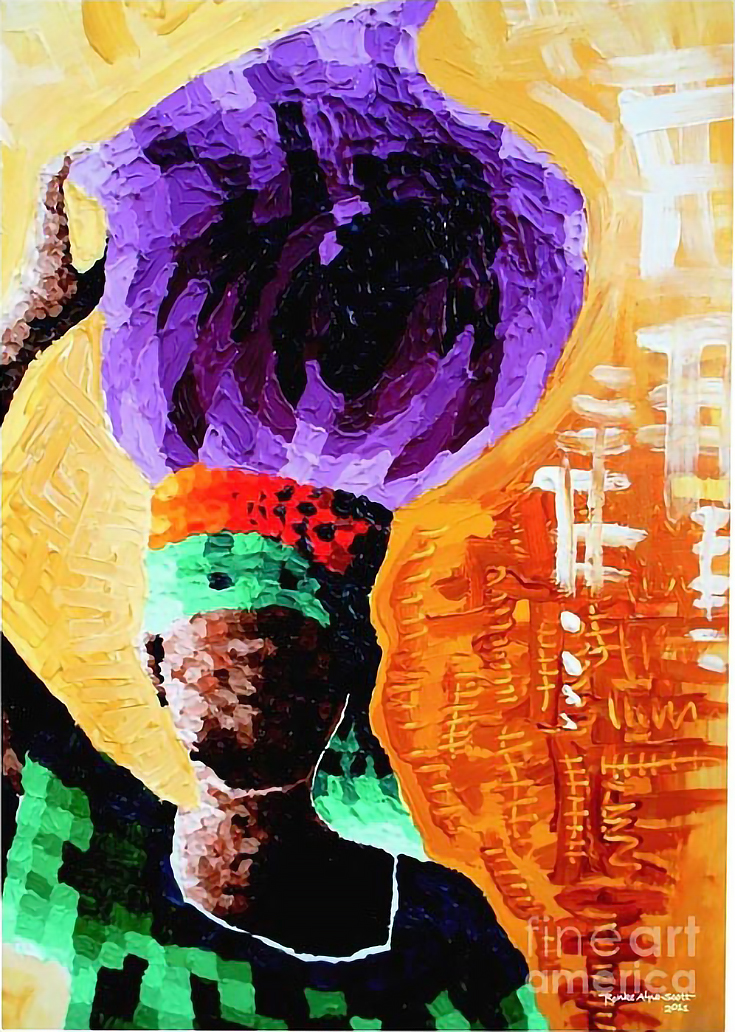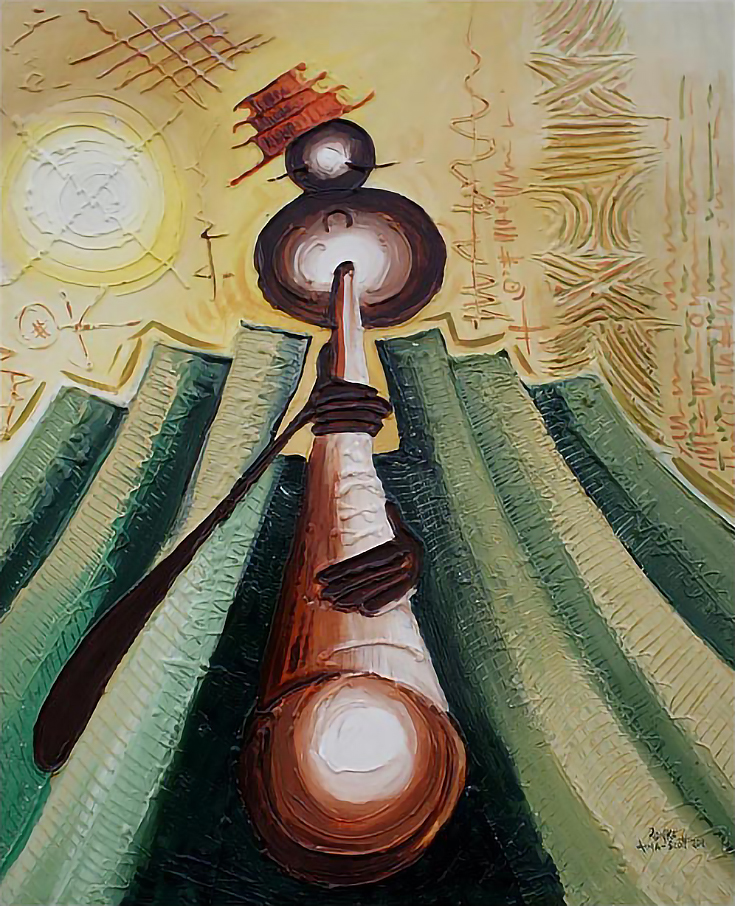With encouragement from her mother, award-winning painter Ronke Aina-Scott’s playful interest in art as a child blossomed into a full-blown vocation as an adult. Today, her choice of medium changes on a dime, but you can bet whatever she creates will be abstract in nature and vibrant with color.
Ronke is especially inspired by African woman in society. Her paintings are almost educational, depicting the laborious beauty, devotion and joy found within the African culture.
Take this first painting, Amokoko – The Potter. Don’t be fooled by the painting’s bright, cheerful colors—these women are hard at work! They toil with aching backs to finish molding their pots, even as the sun threatens to bake them before they’ve taken correct shape.
Tiny marks and shapes within this painting create a busy, light-filled mosaic pattern. It shimmers and shines from one end of the painting to the other, making for a delightfully vibrant work of art.
In this next painting, thatched, curvy brush strokes portray the sultry, scorching waves of heat that Ronke likes so well. They cast shadows over a woman bedecked in brilliant garments, unabashed with rich, saturated color.
The texture of this painting is special. I can make out fingerprints in the handcrafted water vessel and dimples in the woman’s headpiece as it crinkles under the vessel’s weight. Her face and neck glimmer with beads of sweat as she goes about the arduous task of finding clean drinking water and providing enough for her family.
This last painting, entitled The Flutist, is especially lovely to me because of its fun abstraction and composition.
Rectangular green blocks emphasis the folds within this flutist’s shirt. Out of the folds, which stretch to the sky like skyscrapers, is a loose pair of arms which grip the flute with ease.
A fanciful top hat, slightly askew, rests jovially atop the flutist’s head, giving us an idea of the traditional West African music he’s playing as his body sways with the swift rhythm. You even get a sense of the bouncing beat through the variety of symbols and chaotic grooves splashed around the painting.
When you visit Ronke’s website (Are you there yet? If not, you should be!) be sure to read the art description to the right of the page to learn more about African culture and truly appreciate the significance of each work of art.
This post may contain affiliate links.



